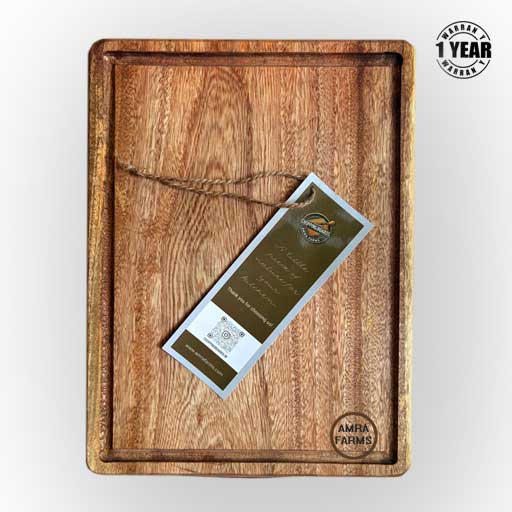Your cart is currently empty!
Get
20% OFF
On Mango Wood Chopping Boards

Blog
Essential Facts You Must Know Before Buying a Teak Wood Chopping Board
A teak wood chopping board will last decades. But it’s not about durability alone. Teak wood chopping boards are an investment and just like any other investment, you need to take care of your cutting board too. Regular maintenance, oiling and addressing issues related to the board’s wear and tear should be taken care of…
Unique Wooden Chopping Boards with Medicinal Benefits
Woods have their own benefits. While some woods are great for furniture, there are others which are great for arts and crafts. Some woods are important for their medicinal benefits too. While crafting a chopping board, you need to consider a lot of features like the hardness of the wood, the construction of the cutting…
Exotic Woods of India and Its Uses
India is rich in its flora and fauna. Some of the best trees in the world are found in India and some are even native to India itself. This article focuses on the most exotic woods of India and their specific uses. Not all wood are equal. While some woods are best for furniture and…
Best Uses of Teak Wood: Common and Unique Applications That Make It the King of Hardwoods
Teak wood is considered a valuable and versatile hardwood, prized for its durability and natural oil and water resistance apart from its beautiful grain patterns. Teak wood is considered a versatile wood which is used both in indoor and outdoor applications where strength and longevity and appearance matter. Apart from furniture, Teak wood has some…
The Top Woods Used for Chopping Boards and Their Hardness Explained
Wood is the most used material for chopping boards. Even with so many other materials entering the market which are affordable and marketed to be durable, wood holds the largest market in the chopping board industry. Wooden boards are cheaper when locally acquired and vary from region, country, and often even between states or cities.…
Why Tamarind Wood Cutting Boards For Meat is Preferred Compared to Teak Chopping Boards
Teak is a tough wood and it is beautiful too. Then why is tamarind wood chopping boards preferred choice in commercial butcher shops compared to teak? Ever wondered why teak is not used for cutting meat in a commercial butcher shop? There are multiple reasons why butchers prefer tamarind wood and not teak, even though…
Hinoki chopping boards in India
The new trend in wooden chopping boards are the hinoki chopping boards, imported from Japan. The Japanese cypress valued for its straight fine grains and light color, the hinoki boards are light and prized in Japanese cooking for tradition and practicality. The subtle citrusy aroma is unique to the Japanese cypress wood. Hinoki wood is…
Walnut vs Maple vs Teak Wood Cutting Boards: Durability, Maintenance, Cost & Lifespan Compared
Indian woods are versatile for chopping boards. But the trend and beauty of imported wood is catching up fast. Wood like maple and walnut are imported from China and western countries. They are widely available in other parts of the world and they are beautiful wood. Comparing them to Indian woods like teak is important,…
Why is tamarind wood Preferred for cutting meat and vegetables in India?
Tamarind Wood Chopping Boards are becoming more and more popular in India and is making a big come back. There are a lot of wood available in India to make chopping boards from. Mango wood is widely available. India is the second largest producer of bamboo, so there are options to choose from bamboo chopping…





